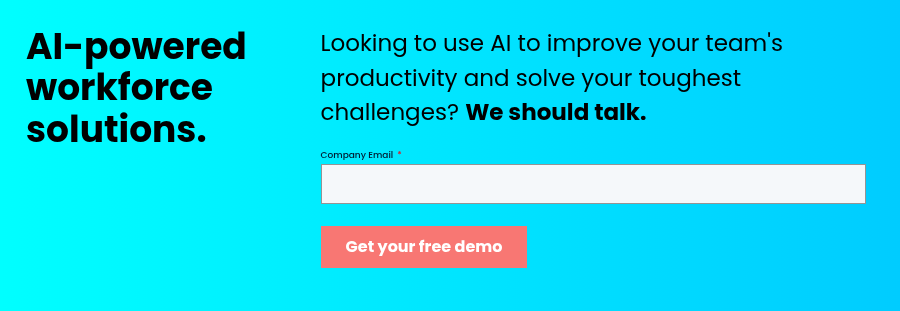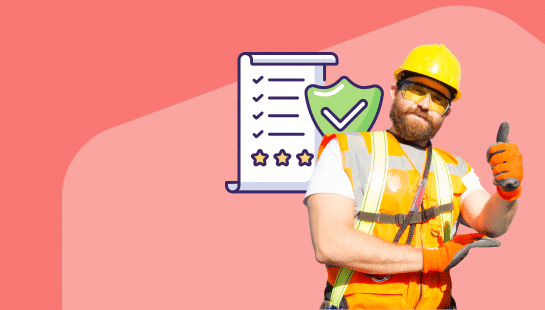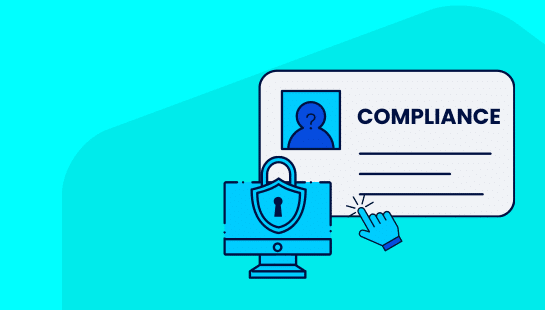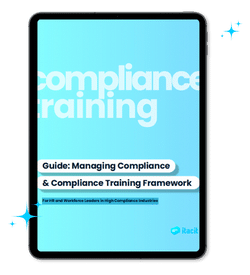Organizations are changing how they train their workforce through AI-powered compliance training. Research shows 78% of professionals believe courses that analyze and adapt to learners’ knowledge will shape their future training efforts. This represents a fundamental change from traditional approaches that don’t deal very well with each employee’s learning needs and understanding of regulations.
AI compliance training gives you powerful tools to automate monitoring and reporting tasks. These tools cut down administrative work by a lot. The technology also provides predictive analytics that help detect potential risks before they become real issues. Companies need to quickly adopt these technologies to keep up with trends in our complex regulatory landscape. Modern compliance AI platforms create individual-specific experiences in multiple languages and boost knowledge retention rates substantially.
This piece examines automation’s role in reshaping regulatory education. It covers the advantages and challenges of AI-powered compliance training and provides practical ways to implement these technologies in your organization.
What is AI Compliance Training?
Organizations are changing how they handle compliance training by using AI-driven approaches to meet regulatory requirements. AI compliance training brings together tech intelligence and regulatory education to create learning that adapts to what each person needs while meeting legal standards.
Definition and scope
AI compliance training helps employees learn and follow regulatory guidelines while teaching them how to use AI properly. These programs build what experts call “AI literacy”, the skills and knowledge that help you use AI systems wisely and spot potential risks.
This training goes beyond simple rules. Modern compliance AI training covers:
- Legal and regulatory frameworks governing AI usage
- Proper data handling practices within AI systems
- Risk identification and mitigation strategies
- Ethical considerations in AI deployment
Unlike standard compliance modules, AI-powered training adapts to each person’s pace and fills knowledge gaps. These systems can also update regulatory changes faster, which keeps your team up to date with new requirements.
The AI Act, which took effect on August 1, 2024, requires organizations to put AI literacy measures in place by February 2, 2025. This law says AI system providers and users must ensure their teams have enough AI knowledge to do their jobs right.
Why it matters in today’s regulatory landscape
AI regulations are getting more complex. By 2026, about half the world’s governments will require companies to follow AI laws, regulations, and data privacy rules. Companies need better compliance training now.
Standard compliance methods can’t keep up with changing regulations. Government rules change faster than ever and vary between locations, political systems, and industries. Old-style training becomes outdated quickly, which puts organizations at risk.
AI tools for compliance training solve these problems with systems that track and alert about regulatory changes. Your training updates right away when rules change, so your team stays informed without delays.
Why use AI for compliance training makes even more sense when you look at how many companies use AI. 85% of organizations already use AI services, which means more risks to manage. Companies struggle to keep their governance and compliance in step with these tech changes.
AI compliance training protects organizations from key risks:
- Data privacy violations – AI models need lots of sensitive data, so following rules like GDPR is crucial
- Cyber and cloud security threats – AI creates new security risks that compliance frameworks help control
- Ethical failures – Training sets boundaries for responsible AI use
- Reputational damage – Good training shows you take AI responsibility seriously
This training also builds transparency and accountability among AI users and stakeholders. Companies need this culture shift as they face more attention from regulators, customers, and the public about their AI practices.
Companies working across borders find AI compliance training valuable. These tools help manage rules in different countries while keeping standards consistent. You won’t need to hire more people to handle the extra work.
AI compliance training pays off beyond just following rules. These programs let compliance experts focus on planning and solving complex problems instead of routine tasks. This change from paperwork to strategic thinking is one of the best benefits of AI-enhanced compliance education.
How Automation is Changing Compliance Education
Organizations are transforming their traditional compliance training model. AI and automation are making static, one-size-fits-all approaches obsolete in regulatory education.
From static modules to dynamic learning
Organizations built traditional compliance learning platforms mainly to cover requirements, not build capabilities. These systems met simple regulatory requirements but failed to create meaningful learning experiences. Users faced clear problems: outdated content, identical delivery for all job roles, and limited insights about course completion rates.
AI compliance training responds to individual learner needs. Modern systems help organizations move beyond annual training cycles to:
- Continuously reprioritize initiatives based on evolving risks and regulatory deadlines
- Break roadmaps into quarterly increments instead of rigid annual plans
- Build flexibility so teams can adapt quickly without abandoning core work
This change fixes a critical flaw in traditional compliance education. Asha Palmer, SVP of Compliance Solutions at Skillsoft explains, “We view risk-based learning as the gold standard for compliance, driven by stricter laws and regulations, and the need for effectiveness and efficiency”.
Results show remarkable differences. Adaptive compliance platforms enhance relevance through role-based pathways customized by job function and geography. They deliver training in short bursts that match how people learn. AI and machine learning tailor the experience by identifying each learner’s knowledge gaps and adjust scenarios based on performance.
Organizations now avoid what Skillsoft calls “historically one-size-fits-all” training that “fails to address the varying responsibilities, needs, and nuances of each employee”. They aim to create tailored learning that builds specific risk management skills and drives measurable behavioral change.
Real-time content updates based on regulations
AI tools for compliance training excel at keeping pace with regulatory changes. Compliance content ages faster than other training materials. Leadership development content might stay relevant for years, but harassment prevention training just 18 months old could teach procedures that violate current law.
Companies face substantial risks. Courts might reject good intentions if training content becomes outdated. They often see expired training as proof that companies knew about requirements but ignored them, showing intentional neglect instead of good faith compliance efforts.
Manual monitoring of regulations proved challenging due to frequent changes, regional differences, and complex legal language. Automated systems now solve this through:
- Real-time alerts on policy changes
- Automated monitoring of government websites and legal databases
- Compliance dashboards for tracking
- Customizable updates based on industry and region
Smart learning systems handle content updates naturally. New versions from publishers automatically enter the learning management system. Administrators receive notifications and get transition periods to replace old courses without disrupting enrollment or learner history.
This feature highlights why use AI for compliance training, it creates a dynamic system that adapts to regulatory changes. Industry standards recommend reviewing compliance content every 12-18 months. Regulatory changes often demand immediate updates. Training requirements can change overnight due to court decisions, enforcement guidance changes, and government website updates.
Compliance AI training helps organizations use their resources better. Automation reduces repetitive compliance tasks like meeting data subject access requests, conducting vendor risk assessments, and monitoring regulatory changes. Compliance teams can focus on strategy development and cross-functional training.
Broecker notes, “The use of automation will continue to expand for compliance purposes. The benefits to the organization are too great to ignore. I believe that the biggest trend will be a drive toward more adaptive learning”.
Key Benefits of AI in Compliance Training
Traditional compliance training used to be just another box to check for many organizations. AI in compliance training now offers real benefits that turn this work into a valuable business asset.
Personalized learning paths
One-size-fits-all training modules are outdated. AI-powered systems now create custom experiences for each employee based on their specific needs and role requirements.
These smart systems evaluate each employee’s knowledge level and build training content. Your finance employees see anti-fraud training scenarios, while HR teams learn about harassment prevention, making learning up to 50% more relevant.
The most fascinating aspect of AI compliance training is its live adaptability. The system watches your progress through materials and adjusts difficulty, format, and pace. You’ll skip content you’ve mastered, while topics you struggle with get extra attention.
This personalized approach delivers impressive results. Organizations using AI-driven personalized learning report:
- Higher satisfaction rates among employees
- Reduced training costs overall
- Stronger cultures of accountability
The numbers back up this fundamental change. More than three in four learning professionals believe courses that analyze learner knowledge and adapt will shape future compliance training efforts.
Higher engagement and retention
Traditional compliance training often fails to fascinate learners. But compliance AI training reshapes the scene by turning passive viewers into active participants.
The numbers tell a clear story: employees forget 70% of compliance content within days of traditional training. AI-powered interactive elements boost retention through live conversations, questions, and realistic scenarios that mirror actual decision-making.
A financial services firm switched their yearly anti-bribery training to AI-driven simulations. The results were stunning – completion rates jumped from 62% to 94% in just three months. A U.S. mortgage lender dealing with over 65 new regulatory documents weekly tried AI training coaches and saw similar improvements.
AI brings several features that boost engagement:
- Interactive elements and gamified modules replace boring training methods
- Live feedback based on individual choices
- Scenario-based learning that mirrors real workplace situations
AI goes beyond initial engagement with continuous reinforcement through bite-sized learning nudges. Employees get timely reminders like “Remember last week’s conflict-of-interest module? Here’s a quick scenario”. This spaced repetition approach helps knowledge stick better than traditional methods.
Faster onboarding and upskilling
Speed matters in today’s ever-changing business world. Why use AI for compliance training? It gets employees ready faster.
AI speeds up the time new hires need to reach peak performance. Companies with resilient AI onboarding processes see an 82% improvement in new hire retention and a 40% reduction in time-to-productivity.
AI tools for compliance training streamline the process by:
- Scheduling training based on role requirements
- Sending timely reminders about deadlines
- Using chatbots to answer routine questions, cutting onboarding time by 53%
AI-powered systems help existing employees by spotting skill gaps through machine learning and showing exactly where more training helps. Teams can create better upskilling programs without guessing what employees need.
One valuable feature lets large organizations match mentors with mentees based on backgrounds, interests, and career goals. This automated matching saves administrative time while building stronger connections across your organization.
AI provides clear visibility through interactive dashboards that track key metrics like module completion rates and time spent on content. Teams can spot struggling new hires and step in before issues grow.
The result? AI-powered compliance training doesn’t just teach rules, it changes how quickly employees become productive, knowledgeable team members.
AI Tools for Compliance Training
Companies are changing their approach to compliance requirements thanks to new educational tools. Let’s take a closer look at the technology that makes this possible.
Adaptive learning platforms
AI powers adaptive learning platforms to create customized educational experiences based on individual knowledge levels and job requirements. These systems review employee performance and adjust content difficulty. Employees can skip topics they’ve mastered while getting extra help with concepts they don’t deal very well with.
The global adaptive learning market shows how this technology has become essential. Projections indicate an increase from $2.87 billion in 2024 to $4.39 billion in 2025, a remarkable 52.7% year-over-year growth. This surge shows how much people just need personalized training solutions.
These platforms give compliance officers major advantages. Real-time monitoring of training completion, assessment scores, and regulatory adherence streamlines compliance tracking. They also generate automated reports for audits and internal reviews, which eliminates mountains of paperwork.
NAVEX and similar companies offer courses that customize content to each learner’s needs, making the best use of employee time. These platforms typically reduce learner seat time by 30-50%. This saves valuable working hours without sacrificing understanding.
AI-generated quizzes and feedback
You can create assessment questions from existing documentation with minimal effort using AI quiz generators. Tools like Whale let you select source content, customize settings, and generate relevant questions with a few clicks. You can review and edit questions before using them.
These AI-powered assessments do more than give right/wrong answers. They provide context-specific resources with questions, offer customized guidance during activities, and adjust difficulty based on performance. Employees learn the “why” behind compliance requirements instead of just memorizing rules.
More than three-quarters of compliance professionals say AI-driven quizzes with customized feedback are vital for future training initiatives. These tools help reinforce key concepts and fix knowledge gaps right away.
Chatbots for learner support
AI compliance chatbots work as conversation partners available 24/7. Natural Language Processing (NLP) helps them understand employee questions accurately and give quick, relevant answers.
Organizations using these tools see impressive results. A financial institution reduced compliance-related HR queries by 65% and policy violations by 45% after adding AI chatbots. Research also shows interactive, conversational learning can improve knowledge retention by up to 60%.
Chatbots become even more valuable by blending with existing workflows. Organizations create easy access to compliance guidance by adding them to common platforms like Microsoft Teams or Slack. This quick support encourages employees to ask for help instead of guessing about procedures.
AI avatars and voice synthesis
AI avatars add a human touch to digital training. These digital characters create experiences that feel like conversations rather than lectures. Employees can practice skills in safe environments.
These avatars can do more than repeat phrases:
- They “understand” context and respond in real-time
- They show emotional signals and facial expressions
- They adjust behavior based on scenarios (being polite, irritated, calm, etc.)
- They represent a variety of ethnicities, genders, and accessibility features
Voice technology often comes with avatar systems. AI-generated voiceovers help keep messages consistent across regions while reducing production costs in compliance contexts. A manufacturing company switched from live narration to AI voices and cut production time from two weeks to two days.
Employee engagement improves substantially. Avatars turn boring training materials into interactive experiences by combining human-like presence with artificial intelligence. Financial services firms have seen completion rates increase from 62% to 94% after using these approaches.
Challenges and Risks of AI-Driven Training
AI in compliance training brings many benefits, but organizations face several challenges to make it work. Let’s get into the potential risks that could limit success.
Data privacy and security concerns
AI compliance systems process so much sensitive information that they become prime targets for cyberattacks. A newer study, published by 11% of employees paste confidential data into AI tools like ChatGPT, which creates major security risks.
These privacy risks go beyond just data breaches. AI systems that collect user behavior data might break GDPR or CCPA rules without proper protection. This becomes a bigger challenge when multinational companies must follow different privacy laws across borders.
Organizations should put these safeguards in place:
- Data minimization strategies
- Proper anonymization techniques
- Regular data protection impact assessments
- Clear transparency policies about data usage
Financial penalties for mishandling data can hit hard, especially under the EU’s NIS 2 Directive and DORA. Lost trust could hurt even more than fines in the long run.
Bias in AI algorithms
Bias in AI tools for compliance training remains one of the toughest challenges. AI systems learn from historical data that often contains hidden prejudices and discrimination.
This bias shows up in several ways:
- Historical bias (reflecting existing societal discrimination)
- Representation bias (inadequate sampling diversity)
- Measurement bias (flawed analysis metrics)
- Evaluation bias (inappropriate measures)
Unfair outcomes can result from these biases. The COMPAS algorithm used in criminal justice gave higher risk scores to African-Americans compared to whites who had the same chance of reoffending.
The “black box” problem makes things worse, many compliance AI training systems don’t explain their decisions clearly. Regulators now just need explainability, and organizations must explain how their AI makes decisions.
Teams must work actively to fight algorithmic bias through diverse development teams, representative training data, and regular testing. Companies that skip these steps risk damage to their reputation and legal troubles.
Over-reliance on automation
Why use AI for compliance training if it might weaken critical thinking skills? Teams that depend too much on automation might lose their knowledge base and struggle to spot risks on their own.
Human oversight stays crucial even with advanced AI compliance training. Clean dashboards might hide system weaknesses or create false confidence. Problems could stay hidden until an audit finds them without active monitoring.
Over-automation brings other risks:
First, algorithms might flag too many minor issues while missing new threats they haven’t learned about yet.
Second, skills can deteriorate when employees only look at dashboards instead of learning risk evaluation principles, turning compliance into a mysterious process.
Third, auditors rarely accept automated results without explanation. Compliance officers still must explain control mechanisms, exception handling, and fix-it plans.
The best strategy combines automation with human judgment. AI can spot compliance issues, but people must weigh reputation risks, set priorities, and verify that problems get fixed properly. This partnership stops compliance from becoming just a technical exercise with no connection to business reality.
Best Practices for Implementing AI in Compliance Programs
Organizations don’t achieve successful AI in compliance training by accident. The best results come from systematic implementation strategies that balance new ideas with responsible governance. Let’s get into proven approaches to deploy these powerful tools effectively.
Start with a clear compliance goal
Your AI implementation needs specific, measurable objectives that directly connect to your business needs. You should define precise compliance targets and identify where AI delivers the greatest value. Time savings motivate 73% of organizations to implement AI, while 71% seek cost reductions.
You need to identify departments or processes where AI compliance training creates the biggest impact. Quantifiable metrics like reduced processing time or improved employee satisfaction work best. Senior leadership must support your initiative.
A practical approach yields the best results. Start with one data set or risk domain before expanding. Internal audit teams become excellent partners who help access data while focusing on manageable questions.
Ensure ethical AI use
Trust grows from establishing complete AI governance frameworks. Organizations have policies governing employee AI use (63%), though 26% still plan to implement one.
A strong AI governance program should include:
- Clear policies addressing fairness, transparency and accountability
- Data governance practices maintaining quality and regulatory compliance
- Risk assessment procedures for continuous evaluation
- Documented processes that line up with ethical standards
Your framework should enable new ideas while maintaining compliance. You retain control by knowing who trained your models, what potential biases exist, and how you can audit results.
Train your team on AI literacy
AI literacy has become essential. The EU AI Act requires all “providers and deployers of AI systems” to establish “a sufficient level of AI literacy” among employees and contractors.
Role-specific training creates the most impact. HR teams using AI in hiring need different knowledge than finance professionals. Teams make better decisions and identify risks with practical AI skills.
Cross-functional education produces the best results. Article 4 defines AI literacy as the “skills, knowledge, and understanding” needed to make informed deployment decisions while recognizing potential risks.
Use LMS platforms like iTacit for tracking
Learning Management Systems for compliance training provide vital infrastructure for successful AI compliance programs. The right platforms integrate with HR AI Assistants and compliance tools to maintain a single source of truth.
Top systems offer AI-driven automation that triggers reminders, sends alerts, and delivers tailored nudges based on training deadlines. These systems track certifications instantly and automate renewal reminders to prevent compliance lapses that could expose your organization.
Security certifications like SOC 2 and GDPR compliance should guide your LMS selection. Your platform needs role-based access controls and proper encryption to protect sensitive information.
Audit-ready reports generated instantly become crucial. This preparation proves vital during inspections or regulatory checks, eliminating last-minute scrambling.
Real-World Examples and Case Studies
AI failures teach compliance professionals valuable lessons. These examples show what can go wrong when AI in compliance training is missing or not good enough.
Clearview AI’s privacy violations
Clearview AI got into serious legal trouble after they created a facial recognition database. They collected over three billion faceprints from online images without asking people’s permission. This huge database let them identify people instantly with amazing accuracy, which made secret surveillance much easier.
The ACLU sued Clearview AI in May 2020 because they broke the Illinois Biometric Information Privacy Act (BIPA). BIPA says companies need written permission before they can collect biometric data like faceprints. Clearview didn’t bother with this step at all.
The company ended up paying $51.75 million in a nationwide class settlement. Their problems didn’t stop there. Regulators in France, Greece, Italy, and the Netherlands hit them with almost €100 million in fines for breaking GDPR rules.
Apple Card’s gender bias issue
Apple faced a major scandal in 2019 when their credit card system gave very different credit limits based on gender. Even Apple co-founder Steve Wozniak noticed his wife got a credit limit 10 times lower than his, though they shared similar assets and accounts.
David Heinemeier Hansson, a tech entrepreneur, brought this to light on Twitter. He called the Apple Card “a sexist program”. New York’s Department of Financial Services started looking into the matter. They made it clear that any algorithm that discriminates against women breaks New York law, whether it’s intentional or not.
This whole ordeal showed a basic problem with many AI systems. Gender bias can stick around even in “gender-blind” algorithms through other variables that are associated with gender.
Dutch Tax Authority’s algorithmic scandal
The Netherlands saw maybe the worst AI compliance failure. Their tax authorities used a system that wrongly accused thousands of families of fraud. The system flagged childcare benefit applications and gave higher risk scores to non-Dutch nationals.
From 2005 to 2019, about 26,000 parents were falsely accused of making fake benefit claims. Many families suffered terribly – they went into debt, lost jobs, and some even lost their homes.
The Dutch government had to step down in January 2021 because of this scandal. Studies showed the algorithm made institutional bias worse through a self-learning system that changed over time with very little human oversight.
These examples show why use AI for compliance training is crucial – not just to follow regulations but to stop AI systems from causing serious damage that can ruin lives and organizations.
The Future of AI in Compliance Training
AI in compliance training will radically alter organizations’ approach from reactive to proactive strategies. Many innovative companies already test advanced applications that will transform regulatory education.
Predictive compliance management
Future compliance AI training systems will do more than monitor current regulations. Advanced algorithms now forecast potential risks by analyzing past patterns among current operations. Organizations can prevent issues instead of just fixing them. AI systems detect emerging risks weeks ahead, which gives teams enough time to act.
Real-time monitoring and alerts
Continuous oversight defines the future landscape. Traditional quarterly reports will give way to AI tools for compliance training that show immediate risk assessments through dynamic dashboards. Smart algorithms scan internal communications, transactions, and documents to detect compliance violations right away. Teams can spot issues as they happen rather than waiting for scheduled audits.
Integration with other technologies like blockchain
AI and blockchain create a robust compliance shield together. These combined systems offer:
- Quick processing of large datasets while maintaining data integrity
- Enhanced security through decentralized storage that reduces breach risks
- Automated compliance through smart contracts
Why use AI for compliance training with blockchain? This powerful combination creates unchangeable audit trails, makes processes transparent, and ensures regulatory compliance automatically without human oversight.
Conclusion
AI compliance training leads the regulatory education transformation. Traditional static approaches no longer work in today’s ever-changing regulatory environment. Organizations worldwide now rely on intelligent systems that adapt to individual needs and keep pace with changing requirements.
Results prove the effectiveness clearly. Customized learning paths cut training time and improve retention rates. AI-powered systems reduce administrative work by 50% or more. Your compliance team can focus on strategic priorities instead of paperwork. On top of that, it helps automated tools detect potential compliance issues early.
Technology evolves faster each day. Adaptive learning platforms, AI-generated quizzes, intelligent chatbots, and lifelike avatars create training experiences that last. These tools turn dry regulatory content into engaging scenarios that mirror real-life decision-making.
In spite of that, challenges exist. Data privacy concerns, algorithmic bias, and potential over-reliance on automation need careful management. Case studies of Clearview AI, Apple Card, and the Dutch Tax Authority show what happens when AI systems run without proper oversight and training.
Your organization’s success depends on finding the right balance. AI tools excel at processing big amounts of regulatory information and delivering customized learning experiences. Human judgment remains crucial to interpret context, make ethical decisions, and apply compliance principles thoughtfully.
Start small with clear goals. Build AI literacy across your team. Create strong governance frameworks that promote fairness and transparency. Note that AI compliance training works best when technology and human expertise work together.
The future points toward predictive compliance management, up-to-the-minute data analysis, and deeper integration with technologies like blockchain. Organizations that become skilled at these tools today will gain most important advantages tomorrow in regulatory protection and operational efficiency.
AI compliance training goes beyond checking boxes. The right approach builds a culture where following regulations becomes natural rather than an afterthought. This cultural shift may prove more valuable than immediate efficiency gains and builds long-term resilience in an increasingly complex regulatory world.










